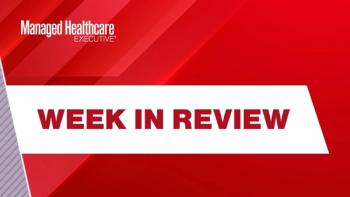
Researchers say anticoagulant prophylaxis in at-risk hospital patients can prevent VTE
A meta-analysis of randomized controlled trials demonstrated that anticoagulant prophylaxis of hospitalized patients statistically significantly reduced their risk of developing both a pulmonary embolism (PE) and deep vein thrombosis (DVT).
Key Points
A meta-analysis of randomized controlled trials published in the journal Annals of Internal Medicine demonstrated that anticoagulant prophylaxis of hospitalized patients statistically significantly reduced their risk of developing both a pulmonary embolism (PE) and deep vein thrombosis (DVT).
"Our findings are relevant to numerous hospitalized medical patients, many of whom are at risk for VTE and may be eligible to receive anticoagulant prophylaxis," the authors stated.
The data included in this study were gathered using MEDLINE, Embase and the Cochrane Library. To be included in the study, trials needed to report data on >1 of the analyses' end points including symptomatic PE, fatal PE, symptomatic DVT, or all-cause mortality. Major bleeding was also evaluated as a safety end point.
All 9 trials evaluated anticoagulant prophylaxis' impact on the development of PE. Prophylaxis was demonstrated to significantly reduce the risk of developing PE by 57% (RR=0.43; 95% CI, 0.26–0.71; absolute risk reduction=0.29%]. Seven studies also evaluated fatal PE risk, with prophylaxis resulting in a 62% relative risk reduction compared with control (RR=0.38; 95% CI, 0.21–0.69; absolute risk reduction=0.25%).
Anticoagulant prophylaxis also reduced symptomatic DVT (n=3 trials; RR=0.47; 95% CI, 0.22–1.00). Prophylaxis did not demonstrate a reduction in all cause-mortality (n=5 trials; RR=0.97; 95% CI, 0.77–1.21).
"We believe that the observed magnitude of risk reduction and the consistency of findings across outcomes analyzed in our study support the use of anticoagulant prophylaxis in at-risk medical patients," the authors stated.
The risk for major bleeding was assessed as a safety end point in 8 of 9 trials. Anticoagulant prophylaxis was associated with a non-statistically significant increase in major bleeding compared with placebo or no prophylaxis (RR=1.32; 95% CI, 0.73–2.37).
In response to this finding, the investigators stated: "Clinicians should apply our findings to clinical practice with caution and should consider anticoagulant prophylaxis within the context of absolute therapeutic benefits, potential harms, and costs as well as the potential limitations of our findings."
SOURCE Dentali F, Douketis JD, Gianni, M, Lim W, Crowther, MA. Meta-analysis: Anticoagulant prophylaxis to prevent symptomatic venous thromboembolism in hospitalized medical patients. Ann Intern Med. 2007;146:278–288.
Newsletter
Get the latest industry news, event updates, and more from Managed healthcare Executive.

















































